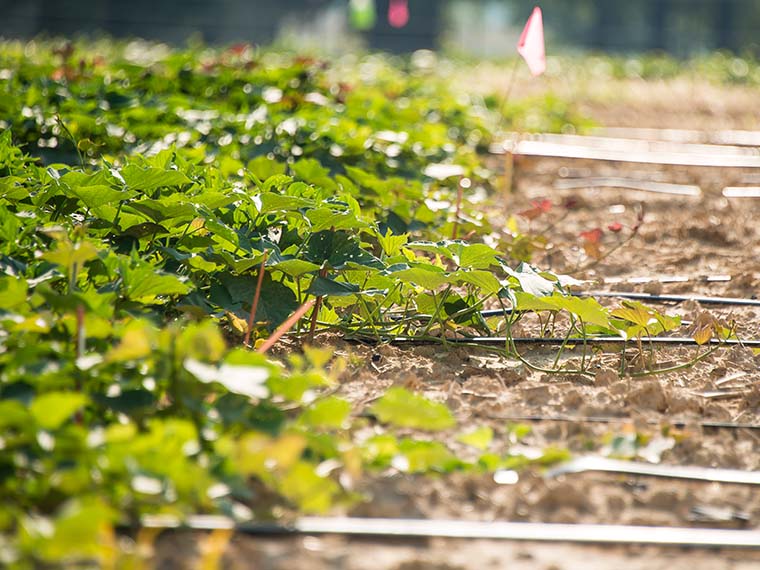The information presented on this page may be dated. It may refer to situations which have changed or people who are no longer affiliated with the university. It is archived as part of Mississippi State University's history.
Situated on 620 acres, the Pontotoc Ridge-Flatwoods Branch Experiment Station's mission is to advance Mississippi's agricultural industry through education, research, and service. Currently, its research focus includes sweet potato production, the management and production of switchgrass fuel, and sesame, corn, cotton, and soybean production.
The land was originally purchased in 1950, and it included two different farms divided by Highway 15. It started out as a cattle farm, and then transitioned to peach production before being purchased by Mississippi State University. Upon purchase, the station was named for the different soil types on the property-Pontotoc Ridge soils and Flatwood soils.
In 1962, the station made history when, under the direction of Henry Leveck, researchers discovered that the element boron was necessary for cotton production. In modern times, producers regularly fertilize with boron in order to increase yields and prevent deficiencies.
Today the station continues its work to promote a substantial economic impact from the production of food, fiber, and fuel for the state and its citizens. Current projects at the station include an official trial for cotton-comparing production on dry land with production on irrigated land-as well as numerous projects examining sweet potato cultivars, pest management, plant nutrients, and other aspects of plant physiology. Additionally, the station has conducted field-scale studies, which utilize remote sensing and precision agricultural technology in cooperation with producers across north Mississippi.
The Pontotoc Branch is well prepared for field, greenhouse, and laboratory experiments with four greenhouses, two high tunnels, and a well-equipped laboratory. The station houses eleven full-time research and extension faculty and staff, and eight seasonal employees who all contribute to maintaining the station's position as a premier research facility. It also hosts an annual sweet potato field day, where growers and industry leaders can get the latest updates on sweet potato research. The station also maintains and provides support for the MAFES Foundation Seed sweet potato program by producing virus-tested planting material.
One of the station's main goals for the near future includes adding a new research associate, who will delve into the topic of post-harvest vegetable production.
The Experiment Station is located on highway 15 about seven miles south of the town of Pontotoc and 17 miles north of the town of Houston. For more information, visit mafes.msstate.edu/branches/north.asp.

